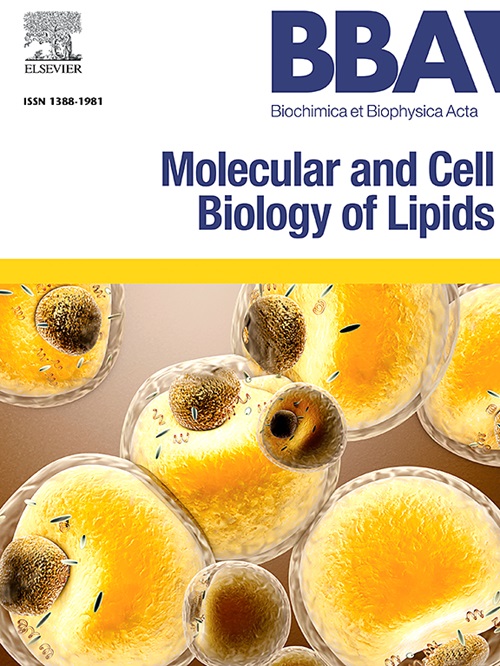Polyunsaturated fatty acids in kidney diseases: Navigating the fine line between healing and damage
IF 3.3
2区 生物学
Q2 BIOCHEMISTRY & MOLECULAR BIOLOGY
Biochimica et biophysica acta. Molecular and cell biology of lipids
Pub Date : 2025-07-23
DOI:10.1016/j.bbalip.2025.159668
引用次数: 0
Abstract
Polyunsaturated fatty acids (PUFAs) regulate renal inflammation through metabolites generated by COX, LOX, and CYP pathways. While prostaglandins, leukotrienes, and 20-hydroxyeicosatetraenoic acid (20-HETE) exacerbate kidney injury, epoxyeicosatrienoic acids (EETs), lipoxins, and other specialized pro-resolving mediators (SPMs) counteract inflammation and promote tissue repair. These lipid mediators also modulate nuclear receptors such as peroxisome proliferator-activated receptors (PPARs) and fibrotic pathways like TGF-β signaling. Disease-specific imbalances in PUFA metabolism have been implicated in nephrotic syndrome, glomerulonephritis, kidney transplantation, and renal cancer. This review integrates mechanistic insights with experimental and clinical data, highlighting therapeutic strategies including dietary ω-3 PUFA supplementation, synthetic SPM analogs, selective enzyme inhibitors, and nanocarrier-based delivery systems. We also address limitations, such as short half-life, off-target effects, and immunoregulatory risks. Lipidomic profiling may aid in patient stratification and treatment personalization. Collectively, targeting PUFA-derived lipid mediators offers a promising adjunct to conventional therapies for inflammatory and immune-mediated kidney diseases.

多不饱和脂肪酸在肾脏疾病中:在愈合和损害之间的细线上导航。
多不饱和脂肪酸(PUFAs)通过COX、LOX和CYP途径产生的代谢物调节肾脏炎症。虽然前列腺素、白三烯和20-羟基二十碳四烯酸(20-HETE)会加重肾损伤,但环氧二十碳三烯酸(EETs)、脂毒素和其他专门的促溶解介质(SPMs)会抵消炎症并促进组织修复。这些脂质介质也调节核受体,如过氧化物酶体增殖激活受体(ppar)和纤维化途径,如TGF-β信号传导。疾病特异性多聚脂肪酸代谢失衡与肾病综合征、肾小球肾炎、肾移植和肾癌有关。这篇综述结合了实验和临床数据的机制见解,强调了治疗策略,包括膳食ω-3 PUFA补充,合成SPM类似物,选择性酶抑制剂和基于纳米载体的递送系统。我们还讨论了局限性,如半衰期短、脱靶效应和免疫调节风险。脂质组学分析有助于患者分层和治疗个性化。总的来说,靶向pufa衍生的脂质介质为炎症和免疫介导的肾脏疾病的常规治疗提供了一个有希望的辅助疗法。
本文章由计算机程序翻译,如有差异,请以英文原文为准。
求助全文
约1分钟内获得全文
求助全文
来源期刊
CiteScore
11.00
自引率
2.10%
发文量
109
审稿时长
53 days
期刊介绍:
BBA Molecular and Cell Biology of Lipids publishes papers on original research dealing with novel aspects of molecular genetics related to the lipidome, the biosynthesis of lipids, the role of lipids in cells and whole organisms, the regulation of lipid metabolism and function, and lipidomics in all organisms. Manuscripts should significantly advance the understanding of the molecular mechanisms underlying biological processes in which lipids are involved. Papers detailing novel methodology must report significant biochemical, molecular, or functional insight in the area of lipids.

 求助内容:
求助内容: 应助结果提醒方式:
应助结果提醒方式:


